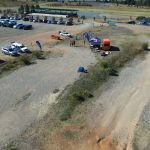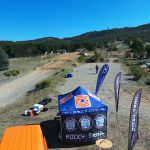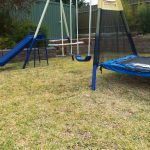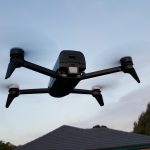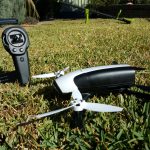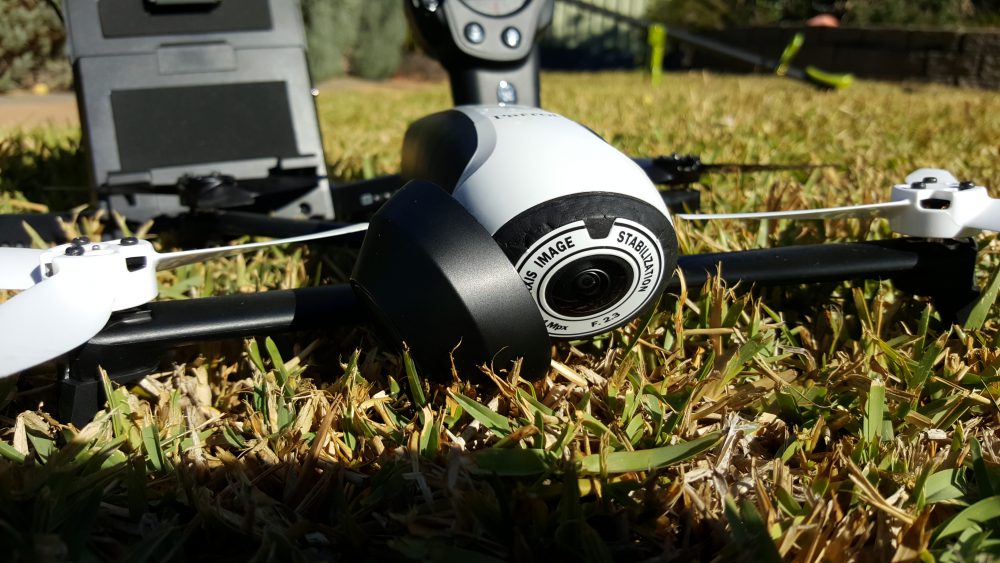
Not long after its release, the opportunity came up to play with… errr, “review’ the Bebop 2 Drone by Parrot. So… it’s not directly “Android” per se, but there is an Android App to control is and if nothing else its really cool and great fun. I’ve played with Action cameras and got some great footage with friends in the past, but there’s a couple of problems with them, the main one being you need to risk your neck to get really good footage.
What I found out very quickly after my first flight with the Bebop 2 was that its actually pretty difficult to get bad footage when you’re 100 meters above the ground.
I also found out that despite the GPS stabilisation and gyroscopes to keep you from crashing it too regularly (yes I crashed it…), flying the Bebop 2 isn’t as easy as you’d think, so I recommend that you take some time to learn the controls, understand how the drone will react to your inputs and its probably ideal to do this at relatively low altitude the first couple of flights.
There is always a game of compromise for designers, and the biggest issue in flight I have with the Bebop 2 is that it’s quite light. The weight of it (or the lack thereof) makes it quite susceptible to being knocked around a bit if you get caught with a decent gust of wind.
Once you grow in confidence you’ll understand what I mean when I say it’s fast and it’s highly manoeuvrable. The top speed of the drone is listed as a touch over 60kph, and with even a slight tail wind, this speed can be reached pretty quickly. To check this I had a bit of a laugh with some cyclists I know who wanted me to chase them with the drone, it was a pretty short chase…
When you get down to the hardware, the Bebop 2 is a great leap forward from the first version which had some really odd issues and quirks when it came to handling the device in the air. The Bebop 2 is made from more solid materials, comprising primarily of fiberglass which makes the drone pretty capable of handling the beating its likely to get when it comes to first-time pilots, or people that push the limits a bit with the space needed to fly.
The footprint of the drone is noticeably larger than its predecessor, which makes it more stable in the air (particularly so when hovering) and less susceptible to buffeting. Added to this, the feet are slightly angled out which makes the drone more stable on the ground. There is a very bright red light on the rear of the drone which gives you decent viision on the device, when you’re behind it but when its 100 meters or more in the air this really doesn’t help you confirm the orientation for flight (this is where having a tablet mounted in your sky controller helps so you can fly from that, rather than rely on what you can physically see – more on this a bit later).
The camera is pretty impressive in daylight for both still capture and video, even to a point at sunset you’re going to get some really good results, but as soon as it goes dark the aperture on the camera just can’t adjust quickly enough to get a really good image. The reality is, however, that anyone who would be running one of these around is going to be doing it during day light hours. The issue that I faced while recording footage for this review was that I ran out of storage space several times and with only 8GB to play with, its easy to see how that can be done.
All in all, frankly it’s a pretty cool bit of kit but it’s not without some problems and design flaws.
The biggest issue that could be result in a catastrophic end to your flying days is that the lens is actually pretty vulnerable at the front of the drone, with no real protection around it. All well and good when you’re being careful in your flight but it won’t take too much of a hit if you’re being adventurous or daring with your flight and getting close to objects.
The other issue I found was the flight time; I want to play for a long time and frankly 25 mins (or less if you’re being aggressive on the controls) of fly time just isn’t enough to satisfy the child within but again, is better than its predecessor which gave up to 20 minutes of fly time but far less if you were being aggressive with the controls. I understand that the designers are playing a balancing act between speed, manoeuvrability and flight time but surely a little more weight and a slightly slower drone with an extra 10 minutes of flight time wouldn’t be out of the question?
The review unit came with the sky controller as well as the drone itself which added a level of brilliance to the device. With the app alone, you can apparently get about 300 meters connection distance to the drone before you lose signal, my experience was more like 180 – 200 where with the sky controller you will get a theoretical 2 kilometres of range. To get the full effect of this, you need to pair your tablet via wifi to the sky controller, your controller to the drone and have the Free Flight 3 app on your device. Once all of the ducks are lined up you’re ready to fly and your tablet will give you a birds-eye view of what you’d see if you were hanging precariously from the under side of the drone.
I discovered, initially to my horror but ultimately to my amusement, that the sky controller will drop out at about 800 meters in metropolitan areas due to all of the other wifi signals bouncing around and interfering with the drone. When the drone was close to 1 km away from me I lost signal and began the hike up the hill to hopefully reconnect and recover the drone but remembered when it came buzzing back over my head to the point I took off from that there is a return home function built into the device which (despite a close encounter with overhead power lines) meant that I got the drone back in one piece and didn’t have an awkward phone call to make to the PR company supplying the review unit.
Putting that aside, when I took the drone to Stromolo Forest Park just outside Canberra with no other wifi signals in range, I was able to get the drone to a range that was on the brink of being out of sight but still controlling it via the sky controller with my tablet mounted in it for the first person view of what the drone can see. Even through mountain bike single tracks (literally wide enough for 1 bike only) the Bebop 2 is able to get through provided you take your time rather than race the bikes that are belting through at break neck speeds which makes it difficult to capture good footage.
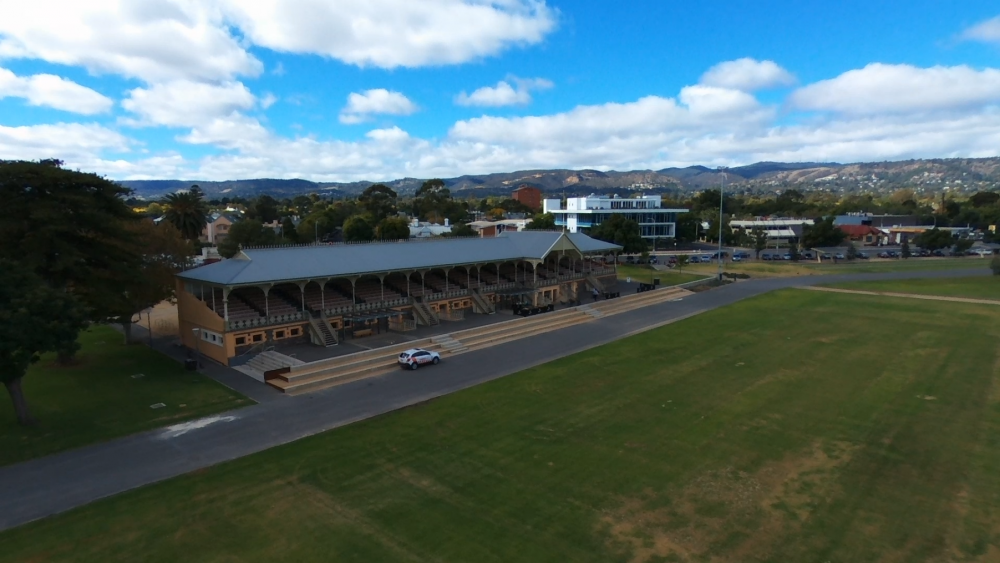
So the upshot out of this is that its lightweight, its very manoeuvrable, its capable of grabbing some fantastic video and still shots and most importantly its great fun to play with err… fly around at various locations. The range, manoeuvrability and general capabilities of the Bebop 2 does open it to a host of uses that initially I didn’t think of such as tradies investigating roof damage without leaving the ground, finding locations of injured riders on a mountain bike track, checking on your kids at the park (NB Wheaton’s Law pretty much describes the CASA regulations on Drone use in residential areas) and of course there’s just general entertainment to consider as well.
Just on that, anyone buying this drone (or any other) needs to familiarise themselves with the rule of flight. Just because you can operate it outside line of sight doesn’t mean it’s lawful; you must be able to see your drone at all times. One must also stay clear of people, populated areas and nearby helipads or airfields. There’s a host of information about this on CASA’s website, and I strongly encourage you to read up on the rules before taking to the skies.
The important question I know a number of people are going to be asking is how much is one of these?
If you purchase the drone only with the intent to fly it from your phone or tablet, you’re going to be looking at $899, but if you decide to go for the Bebop 2 with Sky Controller you’re up for $1299 both of which can be purchased on the Parrot online store. I mentioned a couple of times that the battery life is a bit lacking, and if you’re keen to really have a good play, there are spare batteries that will be available through distribution channels for $99. If you’re planning on taking the drone anywhere that requires a bit of walking (or in my case, riding) to get to your intended location, there’s a backpack that is specifically designed for the drone with Sky Controller that will set you back $149. Personally I don’t see a drone as a daily use item but there is absolutely call for it as a regular use item for many people and if you can afford the price you’ll get a pile of fun out of the Bebop 2 from Parrot.
The backing music for my video is Timewave Zero with thanks to Dawn Heist, You can pick up their albums from Play Music.
What regular use case would you have for a drone in your life?



